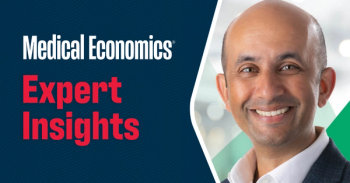
MedPAC mulls over physician compensation through Medicare
December meeting has two days of discussion planned.
The Medicare Payment Advisory Commission (
The current draft Physician Fee Schedule (PFS) recommendations were:
- Congress should update the 2024 Medicare base payment rate by half of the projected increase in the Medicare Economic Index (MEI).
- The 2025 payment rate should be raised by half of the projected increase in MEI. The U.S. Centers for Medicare & Medicaid Services is forecasting a 2.6% increase in MEI for 2025, so if that forecast stays the same, the update would be 1.3%.
- Add-on payments for fee schedule services to low-income Medicare beneficiaries should be established. That includes 15% for primary care clinicians and 5% for non-primary care clinicians.
- Those add-on payments should not be subject to beneficiary cost share and not be budget neutral, according to MedPAC.
If that policy had been in effect in 2019, the analysts estimated add-on payments would have averaged $1,340 per clinician, for a total of $1.7 billion in additional Medicare spending.
The analysts noted the “draft recommendation would increase spending relative to current law.”
The presentation
In the meeting published as an online webinar, MedPAC analysts Rachel Burton, MPP; Geoff Gerhardt, MPP; Brian O’Donnell, MPP; and Ledia Tabor, MPH, presented a snapshot of the Medicare PFS, which covers about 8,000 different clinician services in settings including physicians’ offices, hospitals, and ambulatory surgical centers.
In 2022, Medicare and FFS beneficiaries paid $91.7 billion for fee schedule services provided by 1.3 million clinicians. That was a 1.2% decrease year on year from 2021, and the number of FFS beneficiaries was 3.9% lower from 2022 to 2021.
As of now, current law calls for a 0% update in 2025, while a one-year-only increase of 1.25% applied for
Evaluating the reimbursement rates, MedPAC evaluates payment adequacy based factors including beneficiaries’ access to care, quality of care, and clinicians’ revenues and costs. Access to care and clinicians’ revenues and costs were rated as mostly positive, while quality of care was considered indeterminate.
Access to care
Based on estimates this year, Medicare beneficiaries aged 65 and older had access to care comparable with that of patients with private insurance. Comparable shares of clinicians accept new Medicare patients (89%) and new patients with private insurance (88%).
The MedPAC data indicate some changes in the health care workforce. From 2017 to 2022, the number of clinicians billing under the Medicare fee schedule grew by an average of 2.4% a year, with rapid growth in advance practice registered nurses (APRNs) and physician assistants (PAs). There was growth among specialists, but a decline in primary care physicians.
For all clinicians, the number of encounters per beneficiary grew by 3.1% from 2021 to 2022. Primary care physician encounters decreased by 0.3%, while specialist encounters grew by 1.3% and APRN and PA encounters rose by 10.4%.
Quality of care
MedPAC noted Medicare does not collect much clinical information on FFS beneficiaries, so quality of care was “indeterminate” in 2022. MedPAC has recommended ending the Medicare Merit-based Incentive Payment System (MIPS), calling it “fundamentally flawed” due to variability among quality measures and physician exemptions.
Clinician revenues and costs
Program payments and beneficiary cost sharing for all fee schedule services per beneficiary grew by 2.8% from 2021 to 2022, similar to the 2.9% annual growth from 2017 to 2019.
There is a growing spread between Medicare payment rates and reimbursement by private insurers. Private payment rates were 136% of FFS Medicare rates last year, up from 134% in 2021 and up from 122% in 2011.
That growth may come from increased provider consolidation that creates greater negotiating power with insurance companies, the MedPAC report said, citing studies. The difference is important “because large differences could create an incentive for clinicians to focus on patients with private insurance,” the MedPAC report said.
Last year, compensation rebounded strongly – 9% for physicians, with the median annual physician compensation at $344,000, and 5% for advanced practice providers, with median compensation at $131,000.
Among physicians, the median annual compensation for 2022 was:
- Primary care: $287,000
- Nonsurgical, nonprocedural care: $325,000
- Nonsurgical, procedural care: $465,000
- Surgical care: $481,000
- Radiology: $514,000
MedPAC cited SullivanCotter’s 2023 compensation and productivity surveys.
More discussion to come
The Dec. 7 morning session started with 90 minutes of discussion about payment adequacy and updates for physicians and other health professional services.
MedPAC was scheduled to continue with Dec. 7 sessions on hospital inpatient and outpatient services; hospice services; and outpatient dialysis. Dec. 8 sessions were scheduled to discuss payment for skilled nursing facility services; home health care services; and inpatient rehabilitation services.
Newsletter
Stay informed and empowered with Medical Economics enewsletter, delivering expert insights, financial strategies, practice management tips and technology trends — tailored for today’s physicians.








